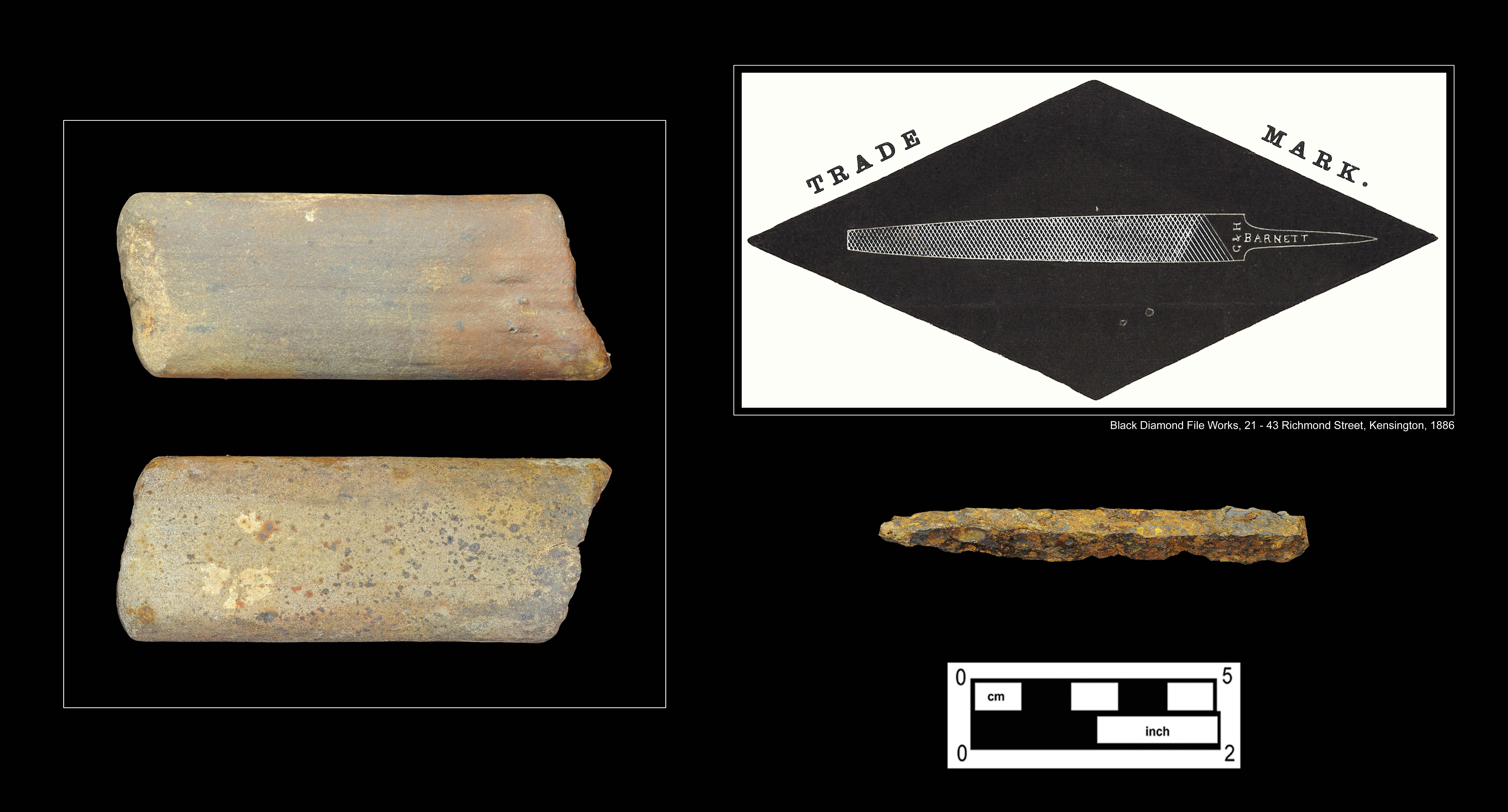
Also of interest are portions of two hand tools recovered from this feature. One of the tools appears to be made of sandstone and represents the mid-section of a large oilstone—or whetstone—which would have been used to sharpen kitchen knives and razors (Cat # 8.51.27). This example was heavily damaged via exposure to fire, and one side is marred with a large brown area and blister-like eruptions. Some of the oilstones illustrated in the Sears, Roebuck catalog for 1902 were shown in wooden housings. 1 The burned surface on the recovered stone suggests that it might have been partially contained in wood.
The other tool is a fragment (3.5 inches in length) of a ferrous metal file that is triangular in cross-section (Cat # 8.50.12). This type of file was often called a “saw file,” and as the name suggests, it was used for sharpening saw blades. 2